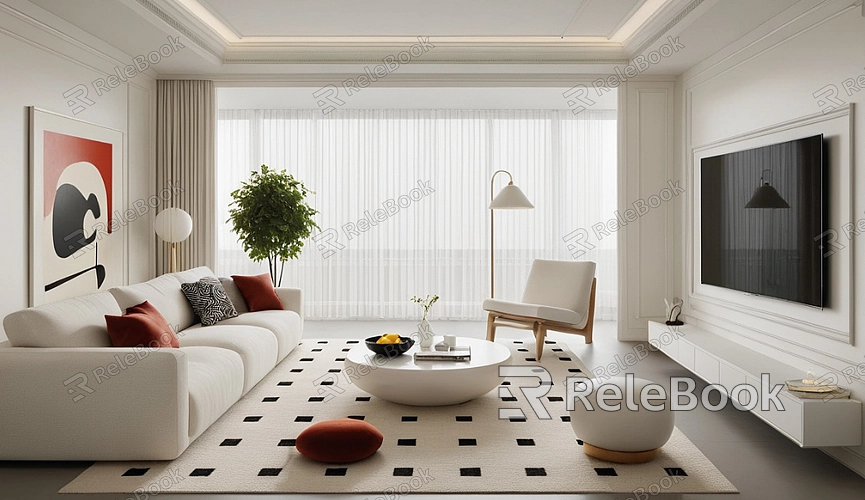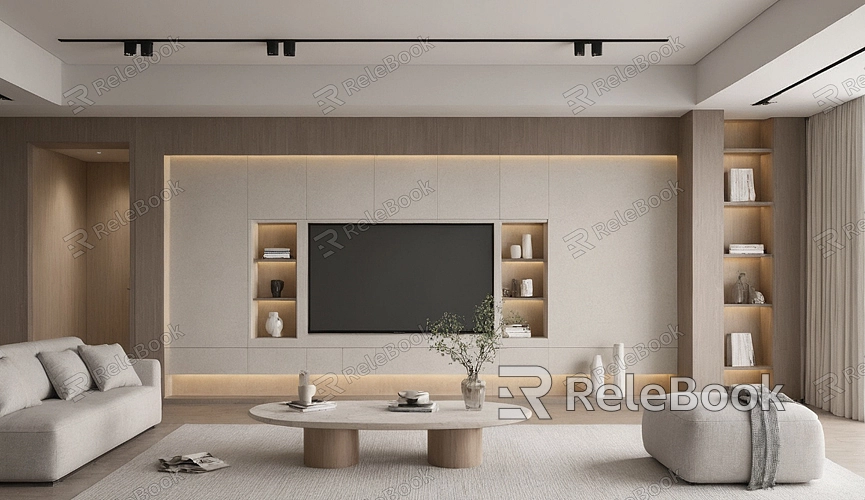How to Use UV Mapping Correctly?
In the world of 3D modeling and rendering, UV mapping is a crucial technique. It's like dressing a 3D model in a carefully customized "outfit", capable of endowing the model with rich details and a lifelike appearance. Through UV mapping, we can accurately map 2D textures onto the surface of a 3D model, making the model look vivid. This article will explain in detail how to use UV mapping correctly.

Understanding the Basic Concept of UV Mapping
The "U" and "V" in UV mapping represent the horizontal and vertical coordinates, respectively, similar to the X and Y axes in a 2D plane. Essentially, it is a way to unfold the surface of a 3D model into a 2D plane so that we can conveniently draw or add textures on this plane. Imagine taking a complex 3D object, like a human body model, and unfolding it into a plane just like peeling an orange. This plane is the basis for our UV mapping operations. Only by clearly understanding this basic concept can we better carry out the subsequent operations.
Preparing Appropriate Texture Materials
Before performing UV mapping, we need to prepare appropriate texture materials. These materials can be self-drawn or high-quality texture images collected from the Internet. The choice of texture should be determined according to the characteristics and requirements of the model. For example, if you are making a wooden furniture model, you need to select an image with the characteristics of wood texture; if you are making a metal object, you should pick a material with metallic luster and texture. Moreover, the resolution of the texture should also be appropriate. If it is too high, it may cause performance problems, and if it is too low, the surface of the model will look blurry.

UV Unfolding of the Model
This is a very crucial step in the UV mapping process. Different 3D modeling software has its own UV unfolding tools and methods. Generally speaking, we need to first select the part of the model to be UV unfolded, and then, through operations such as cutting and stitching provided by the software, unfold the surface of the 3D model into a 2D plane as reasonably as possible. During this process, we should pay attention to minimizing the stretching and distortion of the texture. Once stretching or distortion occurs, after applying the texture, the surface of the model will show unnatural deformations, affecting the final effect. This requires us to patiently adjust and optimize the UV layout to ensure that each part can be unfolded smoothly.
Mapping the Texture onto the UV Coordinates
After the UV unfolding of the model is completed, the next step is to map the prepared texture materials onto the UV coordinates. In the software there are usually corresponding mapping tools, and we can accurately attach the texture to the UV plane through simple operations. During this process, we should pay attention to whether the direction and position of the texture are correct and ensure that the texture can completely cover the area that needs to be textured, and the connection between each part should be natural and smooth. For example, for a model composed of multiple parts, we should ensure that the texture transition between different parts is natural, without obvious seams or misalignments.
Adjusting and Optimizing the UV Mapping Effect
After mapping the texture onto the UV coordinates, it doesn't mean that the UV mapping is completed. We still need to further adjust and optimize the mapping effect. This includes checking for problems such as texture stretching, distortion, and unnatural seams and promptly fixing them. We can improve the effect by adjusting the position and scale of the UV coordinates. At the same time, according to the actual needs of the model, we can also appropriately adjust the color, contrast, and brightness of the texture to make the appearance of the model more realistic and beautiful.
FAQ
My texture looks very blurry after being applied. What should I do?
First, check whether the resolution of the texture material itself is high enough. If it is too low, consider replacing it with a higher-resolution texture. Also, it could be a problem during the mapping process, such as the texture being overstretched. In this case, you need to readjust the UV unfolding and mapping operations to minimize the stretching of the texture.
How can I avoid texture stretching and distortion during UV unfolding?
A: When performing UV unfolding, you should reasonably choose the position of the cutting line, preferably along the places where the texture change on the model surface is not obvious. After unfolding, carefully observe the shape of each part and promptly adjust the areas that show signs of stretching or distortion by operations such as stitching and moving the UV coordinates to restore the normal shape.
The texture transition between different parts is unnatural. How can I solve this?
You can first make a unified plan for the UV layout of different parts before mapping the texture to ensure that their relative positions and sizes on the UV plane are appropriate so that the texture can be naturally connected when mapping. If the unnatural transition has already occurred, you can improve it by adjusting the position, scale ratio, etc. of the texture on the UV plane. You can also consider using some texture blending tools provided by the software to make the transition more natural.
To sum up, using UV mapping correctly requires us to have a deep understanding of its basic concept, carefully prepare texture materials, master the skills of UV unfolding of the model proficiently, accurately map the texture onto the UV coordinates, and continuously adjust and optimize the mapping effect. Only in this way can our 3D model be dressed in a perfect "texture outfit" and show a lifelike effect. If you are interested in 3D modeling and texture making, you are welcome to download 3D models and textures from the Relebook website and start your creative journey!

